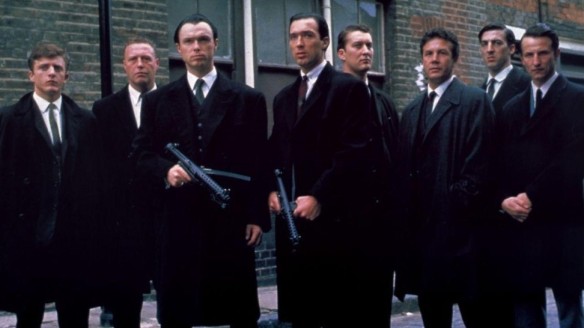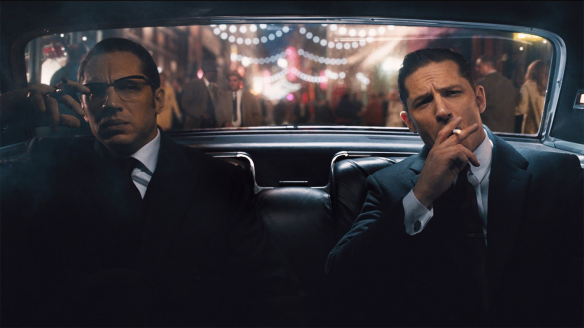By Rosie and Miriam
The 2011 neo-noir film directed by Nicholas Winding Refn tells the story of an unnamed male character – the driver (played by Ryan Gosling) – and his struggle within a post metropolis downtown Los Angeles.

Following on from the 40s and 50s Noir genre, the neo-noir genre shifts subtly with a focus on alienation, separation and paranoia. Neo-noir holds the tradition of depicting instances where ‘happy endings’ are unattainable. Neo-noir portrays the effects of de-regulation and privatisation of the city, aiming to hold a mirror to the neo-liberalist government. The film Drive pays homage to earlier 1980s neo noir through various aspects of the film, the opening titles share the same font as those of ‘To Live and Die in LA’ (1985) and the retro-feeling soundtrack in a conscious nod to the 80s.
Downtown LA was transformed during the 2000s; the addition of high rise buildings and large numbers of real estate led to the Manhattanization of this area. This transformation of a previously neglected area brought higher number of people to live and work in the area, between 2000 and 2009 the population of downtown LA grew by 40%. The changing dynamics of the city transformed LA from a reluctant metropolis to a centripetal metropolis – a city with urban heart and soul. The reappraisal of downtown LA shows a desire to humanise the city and renovate downtown Los Angeles into a place of connection. Alongside this, central LA transforms to a vehicle mobility led city – this is reflected within the film Drive. The use of cars within the film is another example of the change within Downtown LA, it invites the viewer to a different perspective of the city. The hermetic bubble of the car is a usage of continual, monotonous distraction where the driver is passively watching the city – and not within it.
 Drive acts as an example of neo-noir cinema depicting the urban changes of downtown LA, using the postmodern discourse of the city and departing significantly from previous depictions of Los Angeles. For instance, the film differs from earlier 1980s neo-noir as it shows the opportunity and possibility to build human relationships within this urban environment unlike its predecessors. The opportunity for driver to build a relationship is reflected in his longing for his neighbour Irene and her son and his attempt to protect them from urban crime that they are surrounded by.
Drive acts as an example of neo-noir cinema depicting the urban changes of downtown LA, using the postmodern discourse of the city and departing significantly from previous depictions of Los Angeles. For instance, the film differs from earlier 1980s neo-noir as it shows the opportunity and possibility to build human relationships within this urban environment unlike its predecessors. The opportunity for driver to build a relationship is reflected in his longing for his neighbour Irene and her son and his attempt to protect them from urban crime that they are surrounded by.
The film focuses on the everyday life of the characters, with scenes of putting children to bed and carrying groceries. The driver is bewitched by the domestic life of his neighbours and the promise of potential warmth and human connection, engaging in short lived moments of genuine human connection represented alongside an electro-punk soundtrack and emphasis on repeated the repeated lyrics of ‘a real human being’. This optimistic narrative almost overtakes the noir genre within this film, however is eventually shown to be unsustainable and unrealistic in the extreme violence of the films ending. The driver’s regular, unhinged violence creates a barrier for human intimacy and is typical of the Noir genres fatalistic outlook.







 By Alice and Yi-Hsuan
By Alice and Yi-Hsuan
 By Katie Sheehy and Rosie Poliquin-Hill
By Katie Sheehy and Rosie Poliquin-Hill
